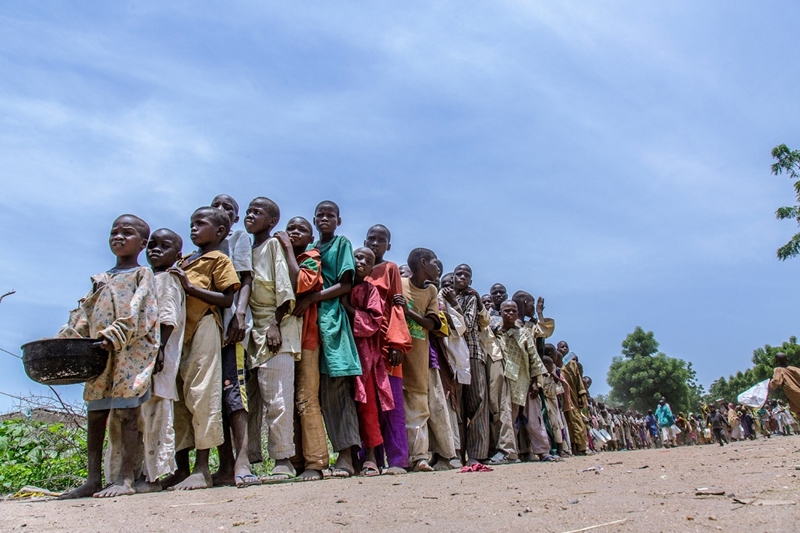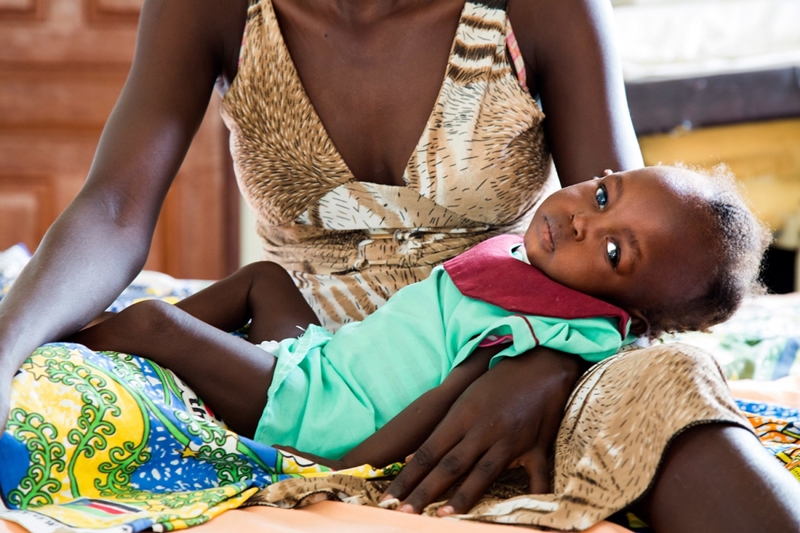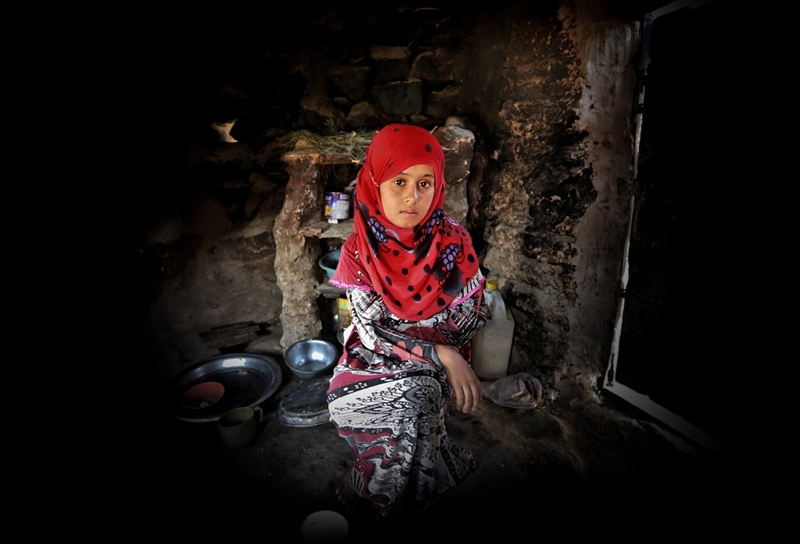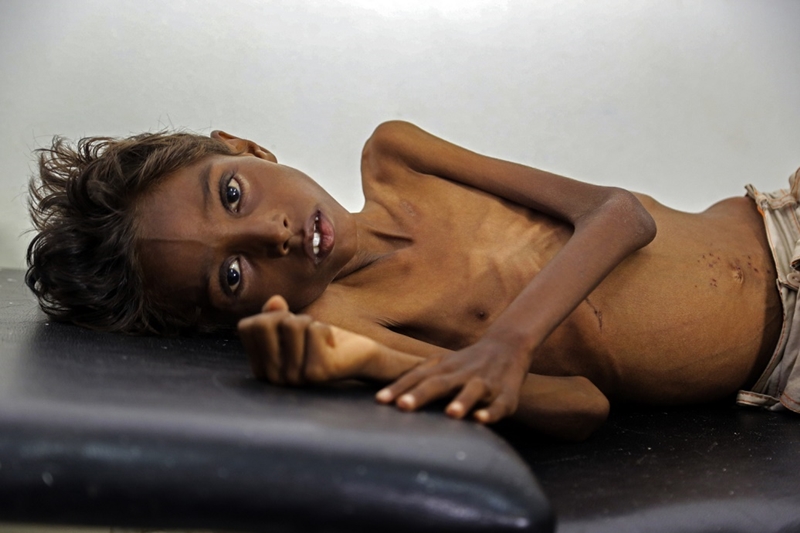5 things to know about children and famine
2017-03-27
© UNICEF/HQ/Johner
1. Children can’t wait. Famine, drought and armed conflict are devastating lives and futures Famine has already been declared South Sudan and is looming in other countries. Children are suffering from malnutrition and disease and need our help.

© UNICEF/UN028427/Esiebo
Internally displaced children waiting for the distribution of ready-to-use supplementary food in Banki IDP camp, northeast Nigeria. Banki is one of the newly accessible areas where UNICEF is offering humanitarian assistance with other partners.
2. Children are being hit hardest. Millions are on the verge of starvation Nearly 1.4 million children are at imminent risk of death this year. In each of the four famine countries and across the sub-regions children will succumb to disease – cholera and measles –which induces severe diarrhea and dehydration.

© UNICEF/UN053447/Gonzalez Farran
Elizabeth Kegi, 18 months, suffering from severe malnutrition, rests on her mother’s lap at the Al Shabbab hospital in Juba, South Sudan. In 2017, ongoing insecurity, and an economic crisis that has pushed inflation above 800 percent, has created widespread food insecurity with malnutrition among children and reached emergency levels in most parts of the country.
3. For now, the crisis has a four-country epicenter: Yemen, Somalia, South Sudan, north-east Nigeria 22 million children are hungry, sick, displaced and out of school in the four countries. As violence, hunger and thirst force people to move within and across borders, malnutrition rates will continue to soar not just in these four countries, but also in the Lake Chad basin and the Greater Horn of Africa.

© UNICEF/UN056039/Holt
Amina Dahir holds up an empty cooking pot as her daughter looks on inside their makeshift home at a settlement near the town of Ainabo, Somalia.
4. Human actions drive the crisis Prolonged wars and conflict are devastating the lives of millions of children and families and threaten famine. Warring parties are forcing people from their homes, destroying crops and livelihoods, and blocking humanitarian agencies’ efforts to reach those in desperate need with life-saving assistance such as food and clean water. Drought is exacerbating these man-made food crises in parts of Africa, in particular, Somalia and the Horn of Africa.

© UNICEF/UN018342/Askool
A young girl collects water from far away in a village in Lahj City due to the water shortage in Yemen.
5. Time is running out If the situation doesn’t improve, not only do children face the risk of dying from hunger, they also have risks for the future. Severe malnutrition also irreversibly impairs intellectual and physical development, affecting children’s life opportunities. The longer we wait to address these childrens’ needs, the more we jeopardize their future.

© UNICEF/UN044523/Fuad
Mohanned, 5, lies on a bed in the Abs hospital in Hajjah, Yemen which has some of the highest numbers of severely and acutely malnourished children. Mohanned’s health has been deteriorating for two years, and only now has his family been able to afford the cost of treatment.
- What can you do?
Three things are urgently needed to save hundreds of thousands of lives:
- Call for an end to the human rights violations that are key drivers of the famines
- Demand that all parties to these conflicts allow unimpeded and unconditional access to all children and families in need
- Donate. Funding is urgently needed to enable teams already on the ground to rapidly increase life-saving nutrition, food and water, sanitation and hygiene programmes.
Children cannot wait for yet another famine to be declared before we take action.









